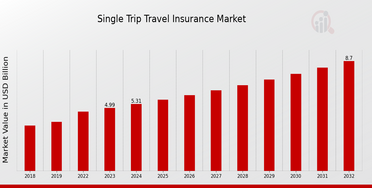When Disaster Strikes: How Business Interruption Insurance Saved a Local Bookstore – Ssunnel
In the quiet coastal town of Seabrook, Maine, Harbor Lights Books had been a community cornerstone for over three decades. Owned by retired schoolteachers Margaret and Tom Harper, the bookstore was a haven for bibliophiles, hosting poetry readings, children’s story hours, and a carefully curated selection of New England authors. But on a stormy September evening, Hurricane Leo made landfall, transforming their idyllic seaside shop into a casualty of nature’s fury. The storm surge shattered windows, soaked centuries-old wooden shelves, and turned 10,000 books into pulp. The Harpers faced not only the loss of their livelihood but the collapse of a legacy. What saved them? A oft-overlooked lifeline: business interruption insurance.
This is the story of how a 124-year-old policy clause—and the Harpers’ relentless grit—revived Harbor Lights Books from ruin.
The Storm That Silenced the Shelves
Hurricane Leo struck Seabrook at high tide, its 95-mph winds peeling back the bookstore’s roof like a tin can. Saltwater surged through the streets, carrying debris that smashed the store’s front windows. By dawn, the damage was apocalyptic:
- Physical Losses: $220,000 (structure, inventory, equipment).
- Closure Timeline: 6 months for repairs.
- Critical Period: The holiday season, which historically accounted for 40% of annual revenue.
“We stood there in waders, pulling soggy copies of Moby-Dick out of the muck,” Margaret recalls. “Tom kept saying, ‘We’re finished.’ But I remembered the insurance agent nagging us about ‘business interruption’ coverage. It felt like a prayer.”
Business Interruption Insurance: The Invisible Safety Net
Most small business owners confuse this coverage with property insurance. The difference is stark:
- Property Insurance: Covers physical damage (e.g., replacing shelves, books, HVAC systems).
- Business Interruption Insurance (BII): Replaces lost income and covers ongoing expenses (rent, payroll, loans) during closure.
For Harbor Lights, BII became the bridge between disaster and reopening.
Calculating Lost Income: The Art of “What Could Have Been”
Insurers determine payouts based on historical financials and industry benchmarks. The Harpers’ claim hinged on three factors:
- Pre-Disaster Revenue:
- 2021 Holiday Season Sales: $98,000.
- 2022 Projection (with 7% growth): $104,860.
- Indemnity Period: The 6-month closure (Sept 15–March 15), including the critical Nov–Dec window.
- Continued Expenses:
- Rent: $3,500/month.
- Salaries (2 part-time employees): $2,200/month.
- Loan Payments: $1,800/month.
Total Claim:
- Lost Income: 104,860(holiday)+58,400 (Jan–March) = $163,260.
- Ongoing Expenses: (3,500+2,200 + 1,800)x6=∗∗45,000**.
- Payout: $208,260.
“The adjuster asked for three years of tax returns, profit-loss statements, even event calendars showing story hours,” Tom says. “It was invasive, but without that paper trail, we’d have gotten pennies.”
Coverage Triggers: The Fine Print That Saved Them
BII only activates if the shutdown stems from a covered physical loss. For the Harpers, this meant proving Leo’s winds (covered) caused the damage—not flooding (excluded under their base policy).
Key Evidence:
- A meteorologist’s report attributing roof failure to wind (covered).
- Security footage timestamping window breaches before floodwaters rose.
- An engineer’s affidavit stating, “Flooding alone wouldn’t have necessitated closure.”
“The insurer tried blaming it on flooding,” Margaret says. “We fought back with science.”
Common Exclusions: The Pitfalls That Could Have Sunk Them
Most BII claims are denied due to policy gaps. The Harpers navigated three landmines:
- Civil Authority Clause:
- Many policies cover closures ordered by governments (e.g., pandemic lockdowns).
- Their Win: Seabrook’s evacuation mandate qualified them for an extra $12,000.
- Extended Period of Indemnity:
- Standard BII stops at reopening, but recovery takes months.
- Their Gap: Post-reopening sales dipped 30% (no coverage).
- Ordinary Payroll Exclusion:
- Insurers often refuse to pay salaries for non-working employees.
- Their Save: They retained staff for online orders, justifying payroll as “necessary.”
The Long Road Back: Relaunching Harbor Lights
With $208,260 in hand, the Harpers:
- Leased a Pop-Up Shop: A vacant flower mart became a holiday storefront ($2,500/month, covered by BII).
- Launched “Survived the Storm” Merch: T-shirts and tote bags featuring a lighthouse logo generated $18,000.
- Hosted a Reopening Gala: Local authors like Stephen King (a Maine resident) donated signed books for a fundraiser.
“The insurance bought us time,” Tom says. “But community is what rebuilt us.”
Lessons for Small Businesses: Don’t Wait for the Storm
- Audit Annually: Update coverage to reflect revenue growth. A 500k policy won’t cover a 1m business.
- Document Everything: Save daily sales reports, employee schedules, even Yelp reviews proving reputation pre-disaster.
- Buy Extended Coverage: Add “contingent business interruption” for supplier disruptions (e.g., if your printer floods).
- Prep a Survival Kit: Store financial records in the cloud; photograph inventory; know your policy number by heart.
The New Chapter
Today, Harbor Lights Books thrives with hurricane-resistant windows and a “Community Resilience” section. The Harpers now mentor other small businesses through the Maine Small Business Alliance, preaching a mantra: “Insurance isn’t a cost—it’s the price of your story’s next chapter.”
As Margaret stamps a customer’s loyalty card, she gestures to the rebuilt store. “Hurricanes come and go. But stories? Those last forever.”



